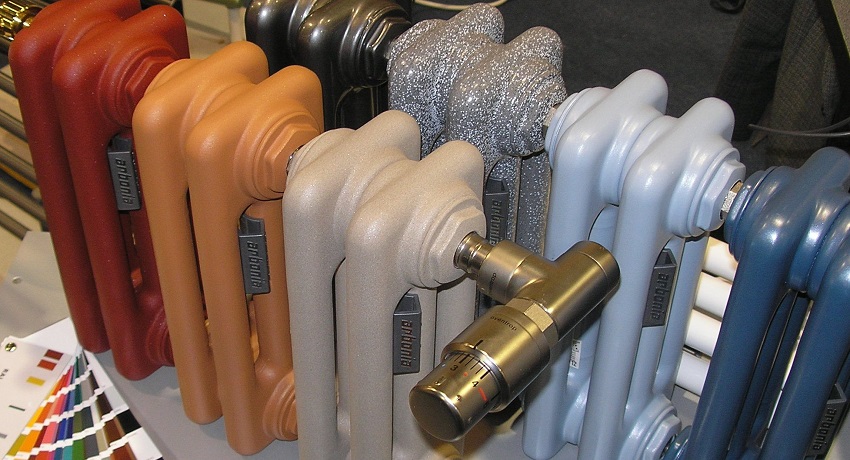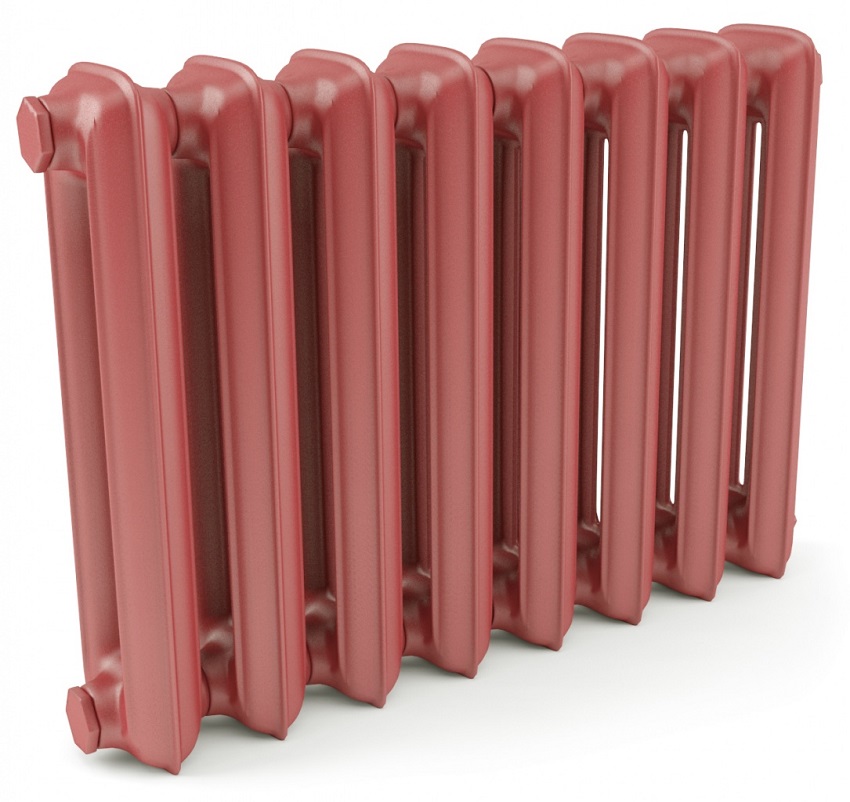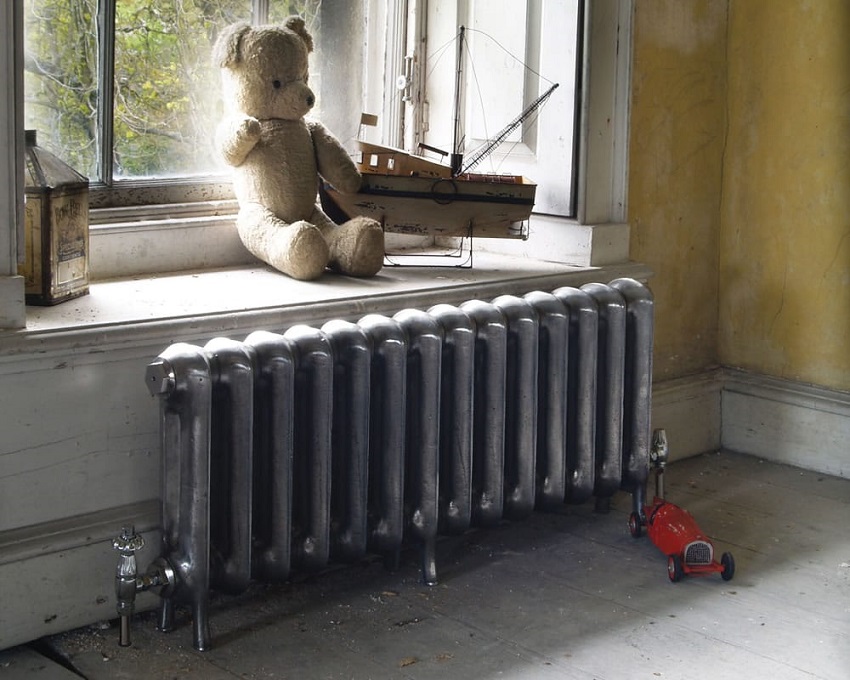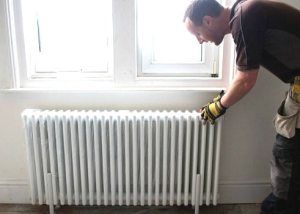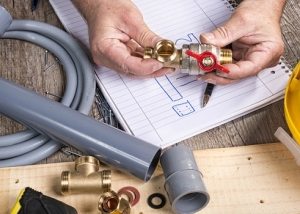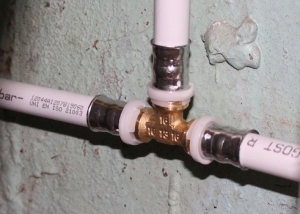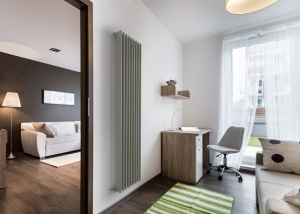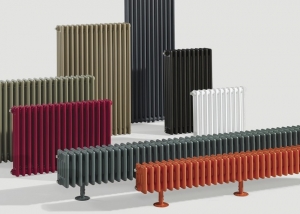Manufacturers of heating equipment annually offer new models, including classic cast-iron batteries. Offhand it is impossible to determine, even approximately, the weight of 1 section of the cast iron radiator MS 140, especially with a coolant. There is no formula, but the tables and direct indications of the weight of the section of the most popular models will help you navigate these values.
Content
Why you need to know the weight of the cast iron battery
Everyone knows that cast iron is the heaviest metal practiced in domestic conditions. Even the weight of one section of the cast-iron heating radiator is palpable in the hands, especially when it is a classic battery for 8-10 sections. Most of the room heating units are hung in pairs on the wall by means of metal brackets. Walls and temporary partitions are made of different materials. The strength of the masonry of brick and shell rock depends on its density.
If the old-style battery can withstand the old supports, then when replacing the ribbed blocks, problems can arise. As the number of sections increases, the total weight will increase. Brackets or old hooks bend, the nests in the wall are deformed, a new cast-iron radiator can noticeably sag. Worse if the battery falls to the floor during the heating season and only on one side, forming all the prerequisites for airing.
It is important to know the weight of one section of a cast-iron heating radiator, respectively, of the entire unit, if they are installed on light walls. If it is fixed to the brickwork or reinforced concrete panel, then lower supports are also needed on the gypsum board partition. But in this case, there can be troubles with forcing parquet, laminate and linoleum on the substrate.
It is advisable to know the weight of the cast-iron radiator, multiplied by the total number of purchased batteries for heating the entire house. It is important to know this for transportation, especially if loading and delivery is done by the buyer.
Calculation of the mass of cast-iron radiators of domestic production
Many Russian manufacturers continue to produce classic ribbed batteries, as they are still in demand. The material varies (lighter alloys) and the number of sections, the weight of which should be indicated in the technical description for the model. The most popular varieties are slightly different and are classified as FM and MS.
Attention! In the technical description indicate the dimensions in millimeters (width, depth or volume and height).
Based on the documentation, the weight of 1 section of FM radiators without a coolant (water):
| Model | Weight, kg |
| ChM1-70-300 | 3,3 |
| ChM1-70-500 | 4,8 |
| ChM2-100-300 | 4,5 |
| ChM2-100-500 | 6,3 |
| ChM3-120-300 | 4,8 |
| ChM3-120-500 | 7,0 |
Total weight of 1 section of a cast-iron radiator with water:
| Model | Weight, kg |
| ChM1-70-300 | 3,95 |
| ChM1-70-500 | 5,7 |
| ChM2-100-300 | 5,2 |
| ChM2-100-500 | 7,25 |
| ChM3-120-300 | 5,75 |
| ChM3-120-500 | 8,4 |
The format (dimensions), the thickness of the cast-iron walls and the number of channels determines the weight of one section. Accordingly, multiplying by the total number of compartments, we have the approximate weight of the cast-iron battery. FM radiators are produced in 1-channel (FM1), 2-channel and 3-channel (FM3) form.
Weight of imported cast iron radiators
To date, many domestic imported models have been put into operation, all of them are classified in different ways. Many cast-iron batteries of a modern type are design ones, imitation in retro-style. They can repeat classical patterns in terms of functionality and dimensions, but they are significantly superior in aesthetics, adding in mass due to artistic soldering or casting patterns. Many initially have legs for floor mounting, such as Viadrus Termo (Czech Republic).
Without water, the weight of 1 section of a cast-iron radiator imported (with dimensions):
| Dimensions | Weight, kg |
| 500/95 | 4,35 |
| 500/130 | 5,35 |
| 623/95 | 5,1 |
| 623/130 | 6,45 |
| 813/95 | 6,7 |
| 813/130 | 8,8 |
Fluid-filled sections:
| Dimensions | Weight, kg |
| 500/95 | 4,95 |
| 500/130 | 6,15 |
| 623/95 | 5,9 |
| 623/130 | 7,45 |
| 813/95 | 7,7 |
Classic cast iron batteries: how much do they weigh
Weight of 1 section of a cast-iron radiator ms 140 of a standard sample with a different center spacing:
- 500 mm - up to 7.2 kg;
- 300 mm - up to 5.4 kg.
Note! The weight of non-standard design samples is up to 14.5 kg.
Cast-iron “accordions” still serve in public institutions, private and apartment buildings. In most cases, these are the classic radiators MS-90 and MS-140 (others did not produce). They coped well with the task, so the number of proposals was small. As experimental series, samples NM-140 and NM-150, RKSh, Minsk-110 and R-90 were launched at different ends of the Union.
The most popular is the MC-140 series, the weight of 1 section of a cast-iron radiator is 7.2 kg (without water), according to the data sheet. Extra weight - plugs, couplings, a Mayevsky tap and other small pieces of the connection. When filled, its mass is about 8.62 kg. This indicator is considered the main one when calculating the total mass of cast iron heaters, when the load on the brackets and wall is calculated. For an ordinary living room of a one-room apartment with an area of 20 m², “harmonica for 10-12 sections, which weighs up to 104 kg in full, is enough.”
